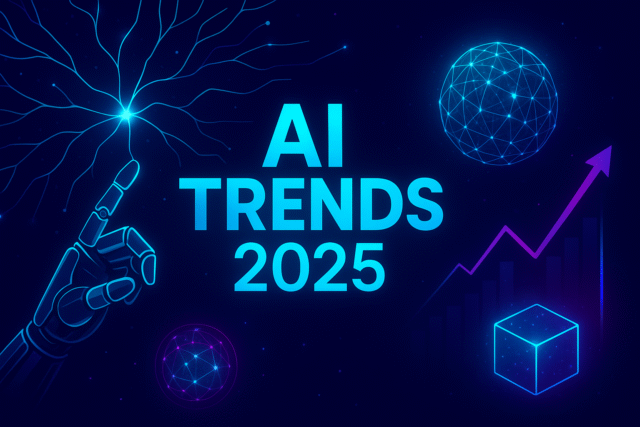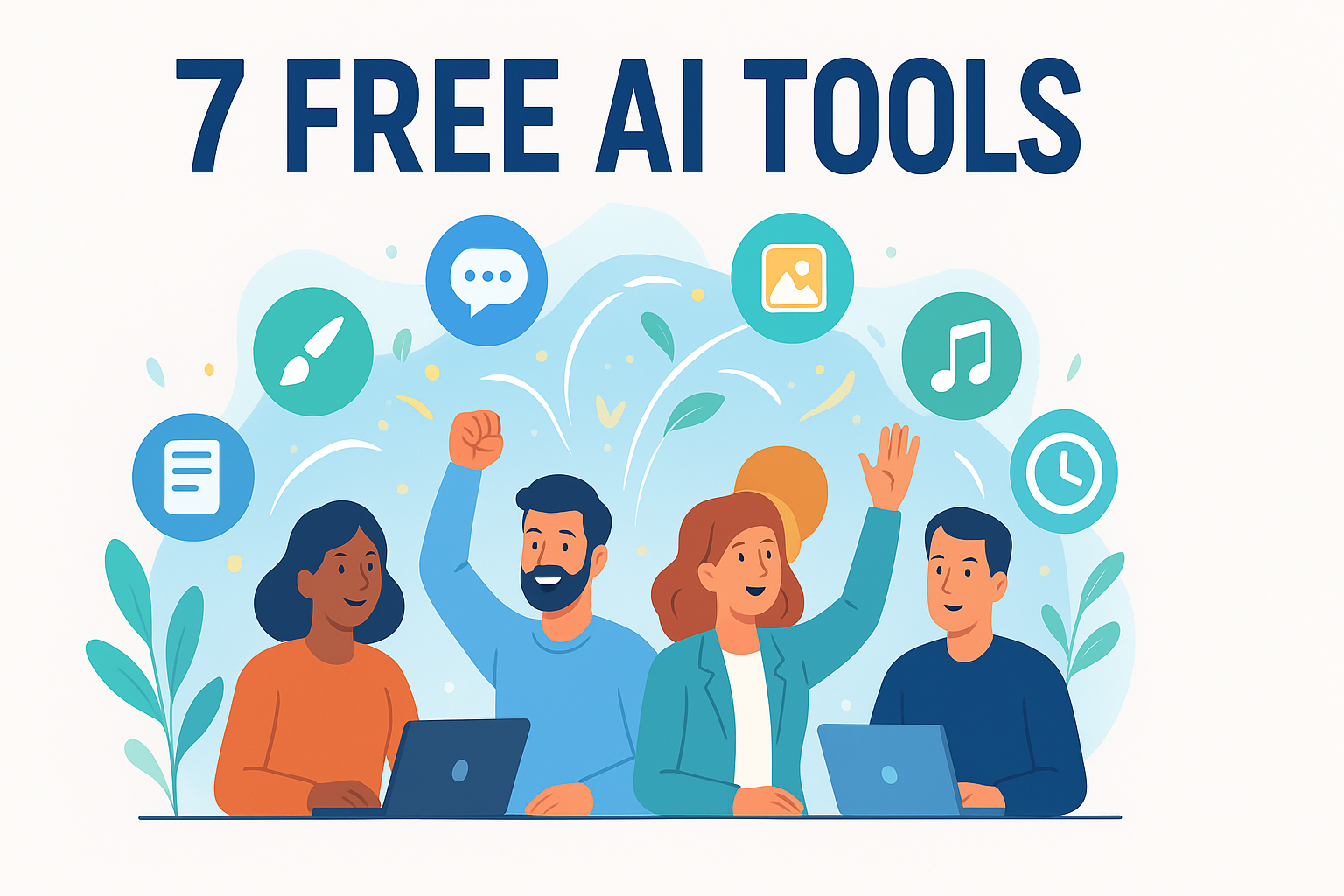The pace of artificial intelligence innovation is not just accelerating; it’s exploding. What felt like science fiction a year ago is now a free tool you can use in your browser. But what’s next? For business leaders, developers, and curious minds in the US, UK, and Canada, understanding the key AI trends 2025 has on the horizon is no longer a luxury—it’s a necessity for staying competitive.
This isn’t just about cooler chatbots. We’re moving into a new era where AI transitions from a passive tool to an active partner. Let’s dive into the future of AI and the emerging AI technologies that will redefine our world in the next year.
1. The Rise of Agentic AI: From Tools to Teammates
Forget simple commands. The biggest shift coming in 2025 is toward Agentic AI. These aren’t chatbots that just answer questions; they are AI systems that can understand complex goals, break them down into steps, and execute them autonomously across different applications.
Imagine telling your AI agent, “Plan and book a full family vacation to Hawaii for December, staying within our $5,000 budget.” The agent would research flights, find hotels, read reviews, book reservations, and even create a day-by-day itinerary—all without you lifting a finger. This move from assistants to agents will be a monumental breakthrough in artificial intelligence.
2. Generative Video Goes Mainstream
Generative AI exploded with text and images. 2025 will be the year of generative video. Tools like OpenAI’s Sora and others will become more accessible, allowing anyone to create short video clips, marketing ads, or even prototype film scenes from simple text prompts.
The implications for content creators, marketers, and filmmakers are staggering. While feature-length AI movies aren’t quite here yet, the ability to quickly generate B-roll, visual concepts, and social media clips will become a standard part of the tech innovation toolkit.
3. Multimodal AI Becomes the Standard
Today’s most advanced AIs are “multimodal.” This means they don’t just understand text; they can simultaneously process and understand images, audio, and eventually, video.
You’ll be able to show your AI a picture of a broken engine part, ask it what’s wrong via voice command, and have it generate a repair manual text guide. This seamless blending of senses makes AI interactions far more natural and powerful, pushing the boundaries of machine learning trends.
4. The AI PC and On-Device Processing
Privacy, speed, and cost are major barriers to AI adoption. The solution? On-device AI. Chip manufacturers like Intel, AMD, and Apple are embedding dedicated Neural Processing Units (NPUs) into their hardware.
This means your laptop or phone will run powerful AI models directly, without needing an internet connection to the cloud. Your data stays private, responses become instantaneous, and the cost of using AI plummets. This hardware shift is a critical trend in tech that will democratize access.
5. AI-Powered Robotics Gets Real
AI isn’t just digital anymore. It’s getting a body. Advances in AI and robotics are leading to robots that can learn from their environment through computer vision and deep learning. We’re moving from robots that perform repetitive, pre-programmed tasks to ones that can adapt to unpredictable situations.
Think of warehouses where robots can handle any object thrown at them, or home helper robots that can load a dishwasher they’ve never seen before. This convergence of AI and robotics will begin transforming logistics and manufacturing in 2025.
6. The Generative AI Backlash and the Rise of Ethics
With great power comes great responsibility. As AI becomes more pervasive, a counter-trend of scrutiny will intensify. Expect more robust AI regulation from governments in the EU, US, and Canada, focusing on data privacy, copyright, and transparency.
Companies that prioritize ethical AI—being clear about how their models are trained and how data is used—will build greater trust with their customers. “Ethical by design” will become a key selling point.
7. Hyper-Personalization in Marketing and E-Commerce
Generic ads are dead. AI in 2025 will enable hyper-personalization at an unimaginable scale. AI will analyze a user’s behavior, past purchases, and even real-time mood to dynamically generate personalized product descriptions, email offers, and website layouts.
Your version of a shopping website could look completely different from mine, tailored specifically to our individual preferences. This will be a game-changer for conversion rates and customer loyalty.
8. AI in Healthcare: From Diagnosis to Drug Discovery
The future of AI in healthcare is incredibly bright. We’ll see wider adoption of AI tools that help doctors analyze medical images (X-rays, MRIs) with superhuman accuracy, spotting early signs of disease that might be missed by the human eye.
Furthermore, AI for drug discovery will accelerate, using predictive models to simulate how new compounds will behave, drastically cutting down the time and cost of developing new life-saving medications.
9. AI-Native Applications Redefine Software
Instead of just adding an AI feature to existing apps, a new wave of AI-native applications will be built from the ground up with AI as their core functionality. These apps wouldn’t exist or make sense without AI, offering entirely new ways to create, learn, and work.
This is a fundamental shift in software development trends, much like the move from desktop to mobile-first design.
10. The Battle of the Open-Source vs. Closed-Source Models
The debate between proprietary AI models (like those from OpenAI and Google) and open-source models will heat up. Open-source models are becoming increasingly powerful, offering more customization and transparency for developers.
This competition will drive innovation, lower costs, and give businesses more choice in how they implement AI solutions, fostering a more diverse ecosystem.
11. The Skills Gap and the Rise of AI Prompt Engineering
As AI becomes integral to every job, the most valuable skill won’t necessarily be coding—it will be effectively communicating with AI. Prompt engineering—the art of crafting precise instructions to get the best output from an AI—will become a critical career skill across industries.
Businesses will urgently need to upskill their workforce to harness the full potential of these new tools, creating a massive shift in the job market and education.
Preparing for the Future: How to Stay Ahead of AI Trends
Understanding these AI predictions is step one. Preparing for them is step two.
- For Businesses: Start with pilot projects. Experiment with agentic workflows and generative video for marketing. Prioritize data governance and ethical AI principles.
- For Professionals: Embrace a learning mindset. Play with new AI tools as they emerge. Develop your skills in prompt engineering and critical thinking to work alongside AI effectively.
- For Everyone: Stay informed. The landscape changes monthly. Follow trusted sources that cut through the hype and focus on practical tech advancements.
Conclusion: Embrace the Shift
The AI trends of 2025 point toward a more integrated, autonomous, and powerful technological future. This isn’t about replacement; it’s about augmentation. By understanding these key trends in artificial intelligence, you can position yourself and your business not just to adapt, but to lead and thrive in the new world that’s coming.
The future is not something that happens to us; it’s something we build. And now, we have smarter tools than ever to help us build it.










[…] using AI in 2025, you’ve likely faced the big question: Claude 3 or ChatGPT-4? These two giants dominate the AI landscape, but they’re not the same. Choosing the right one can save you time, money, and […]